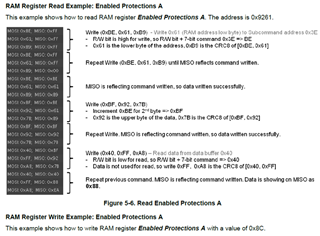Other Parts Discussed in Thread: BQSTUDIO
1. I don't have complete information. In any programming spi-protocol,example
SLUAA11A-BQ76952 Software Development Guide.
2.Request an example of spi-protojol programming, writing commands (16-bit)
3.Settings What are the steps sequence ?


